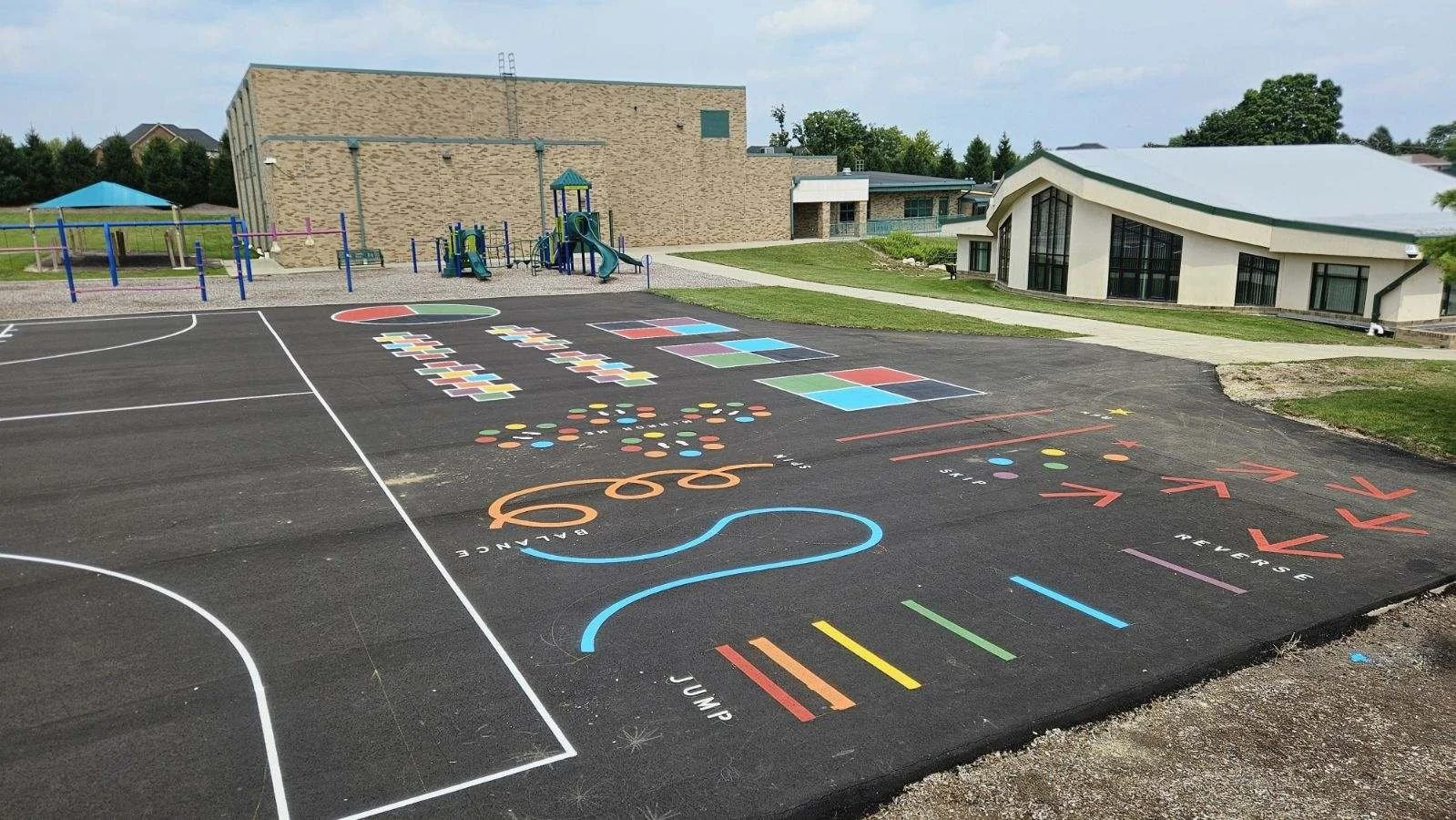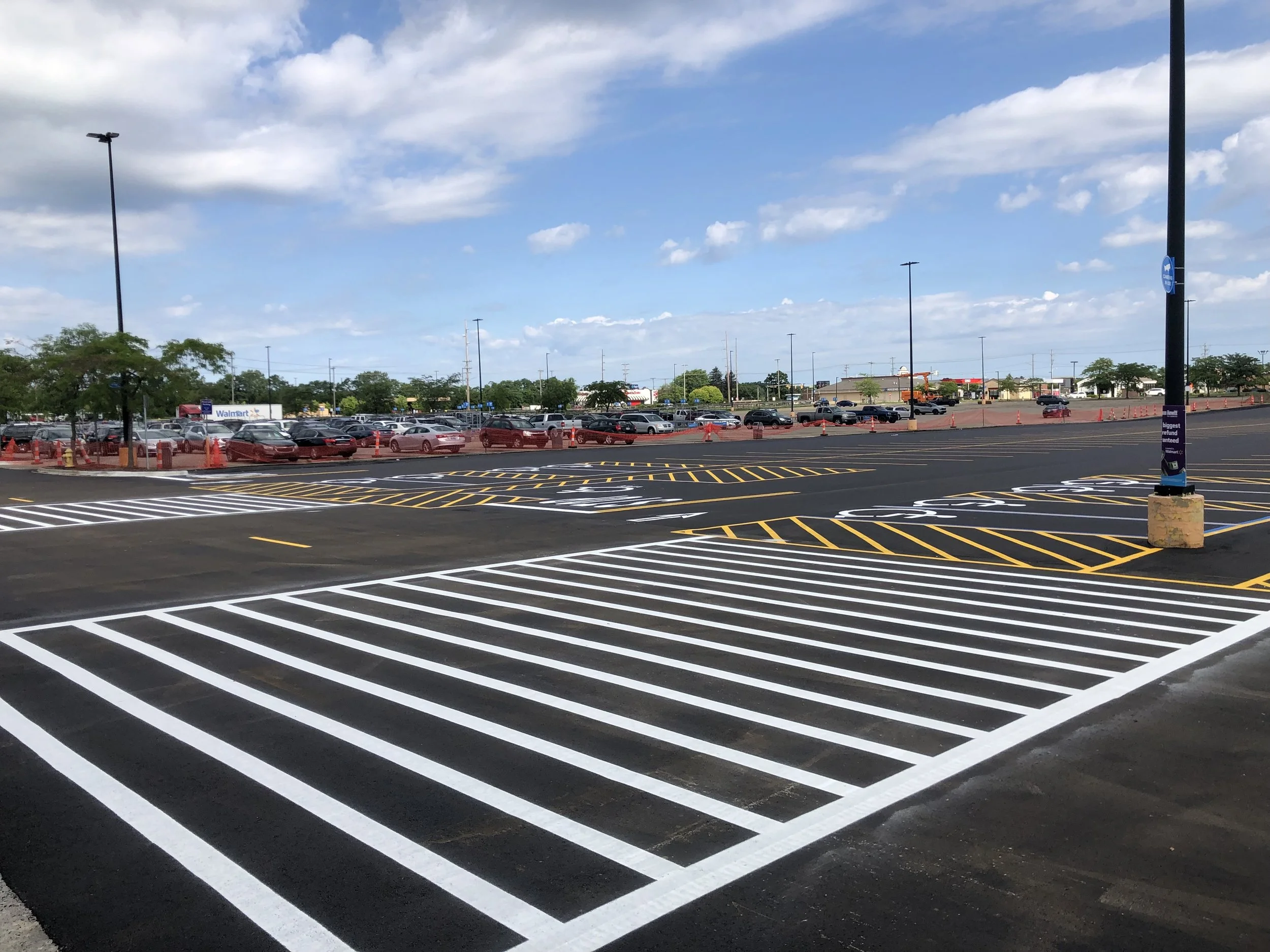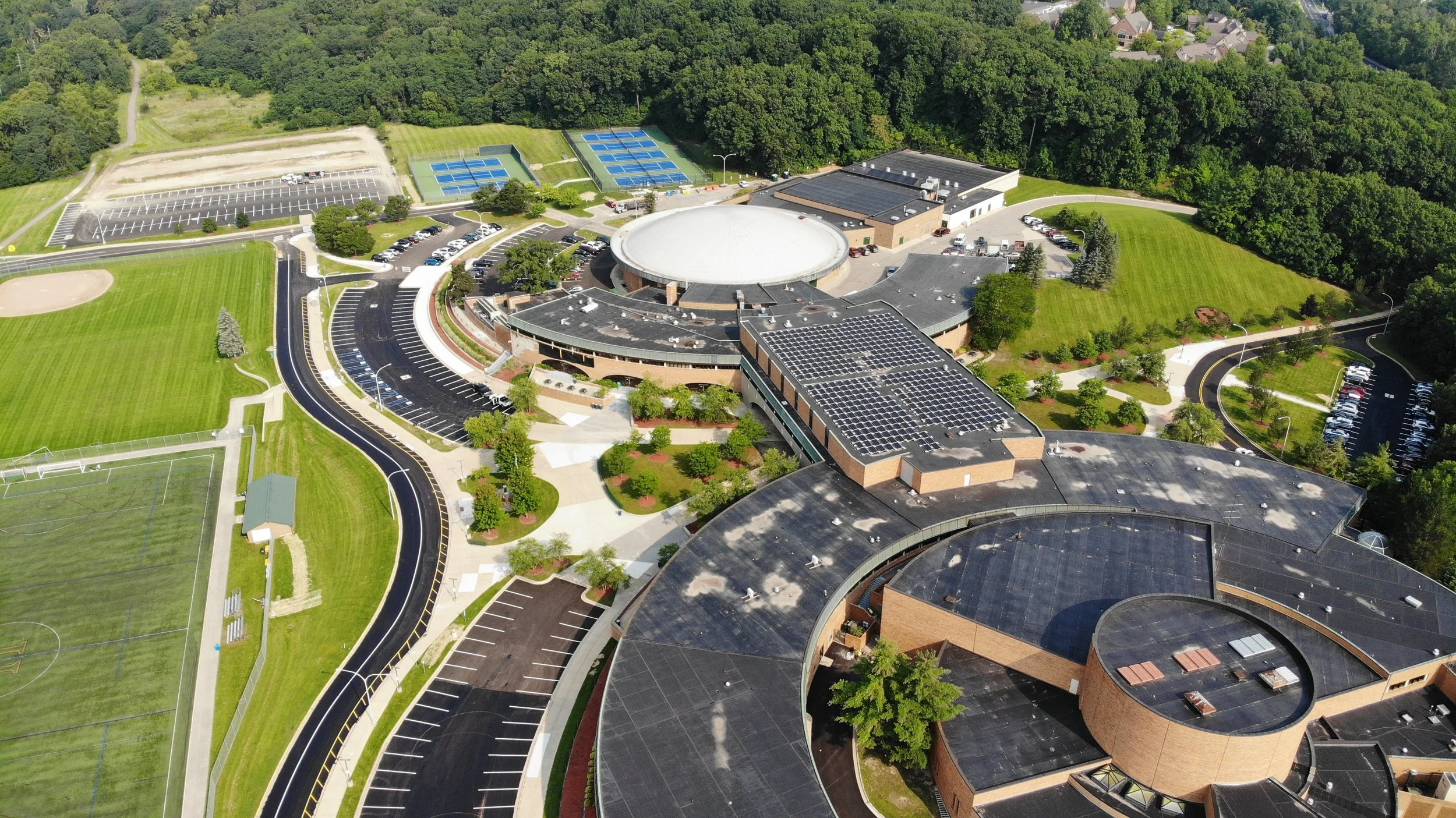Things to Consider Before Striping on Your Concrete Surface
Proper striping on concrete surfaces is essential for both aesthetics and functionality. Whether you are marking parking lots, walkways, or other concrete areas, a well-done striping job enhances visibility and durability. Before you begin, here are key factors to consider to ensure the best results:
1. Allow Proper Curing Time
No matter the curing method used, it is suggested to allow at least 90 days for the concrete surface to fully cure before applying any markings. This waiting period ensures the concrete has reached its optimal strength and stability, allowing surface marking materials to adhere better and last longer. Additionally, surfaces that have experienced some traffic prior to striping tend to hold markings better, as they’ve been naturally conditioned.
2. Understand Your Curing Method
The method used to cure the concrete significantly impacts the striping process:
Curing Agent Sprayed Surfaces: If a curing agent has been sprayed onto the concrete, it must be removed before striping. The waxy nature of curing agents prevents paint from adhering directly to the substrate. This removal process typically involves grinding or wire brushing the surface to eliminate the protective layer.
Tarped Surfaces: Surfaces that have been tarped to retain moisture during the curing process usually perform better when painted. These surfaces often lack a protective layer, allowing the paint to bond more effectively with the concrete.
By considering the curing method, you can avoid premature paint failure and ensure a durable, professional finish.
3. Prioritize Contrast
Contrast is critical for visibility and aesthetics. Yellow paint is commonly used on concrete surfaces due to its ability to stand out against the bright, neutral tones of new cement. However, adding a black trim around lines or legends can enhance contrast and make markings more visible. This technique also allows for the use of white paint, which provides a clean and modern look on concrete surfaces when paired with black accents.
4. Be Mindful of Timing and Weather
Weather conditions play a significant role in the success of your striping project:
Moisture: Avoid striping on concrete surfaces the day after a heavy rain. Even if the surface appears dry, lingering moisture can prevent proper paint adhesion. Allow one to two days of sunlight to ensure the concrete is completely dry before applying paint.
Cold Temperatures: During the winter months, refrain from striping when temperatures drop below freezing. Cold weather impacts the curing process of the paint, leading to poor adhesion and a less durable finish.
Choose the Experts for Your Concrete Striping Needs
By taking these factors into account, you can achieve a high-quality striping job that lasts for years. At IC Striping, we understand the intricacies of striping on concrete surfaces and ensure every project is handled with precision and care. Trust us to deliver exceptional results that meet your needs and exceed your expectations.
Contact us today to get started on your next concrete striping project!




